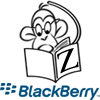For most of my career I've been very suspicious of dynamic data representations. After all, what's the point of having a compiler if it isn't provided with enough information about the shape of the data being manipulated to tell you when your code is going wrong. However, that really only works for data created and consumed within a single application. In the mid-90s, every C++ framework worth its salt had a huge bunch of code dedicated to turning arbitrary C++ objects into something that could be serialized and regenerated as objects later; and in fact that's about as far as most people got with CORBA before giving up.
But most objects in a C++ program, if they're objects at all, simply don't need to be serialized. The ones that do have disparate needs, and special cases abound. The approach I've found most flexible and least intrusive is to provide ZTuple. In this context a tuple is isomorphic to a LISP a-list, Python or Cocoa dictionary, Perl or Ruby Hash or to a Java Map. It's simply a list of name/value pairs, where values can be primitives (strings, numbers, raw bytes etc), tuples or lists of values.
ZooLib provides a suite of facilities that read and write tuples to binary streams, generate and parse a well-defined and easy to read text format, and that can read and write appropriate data formats as tuples.











